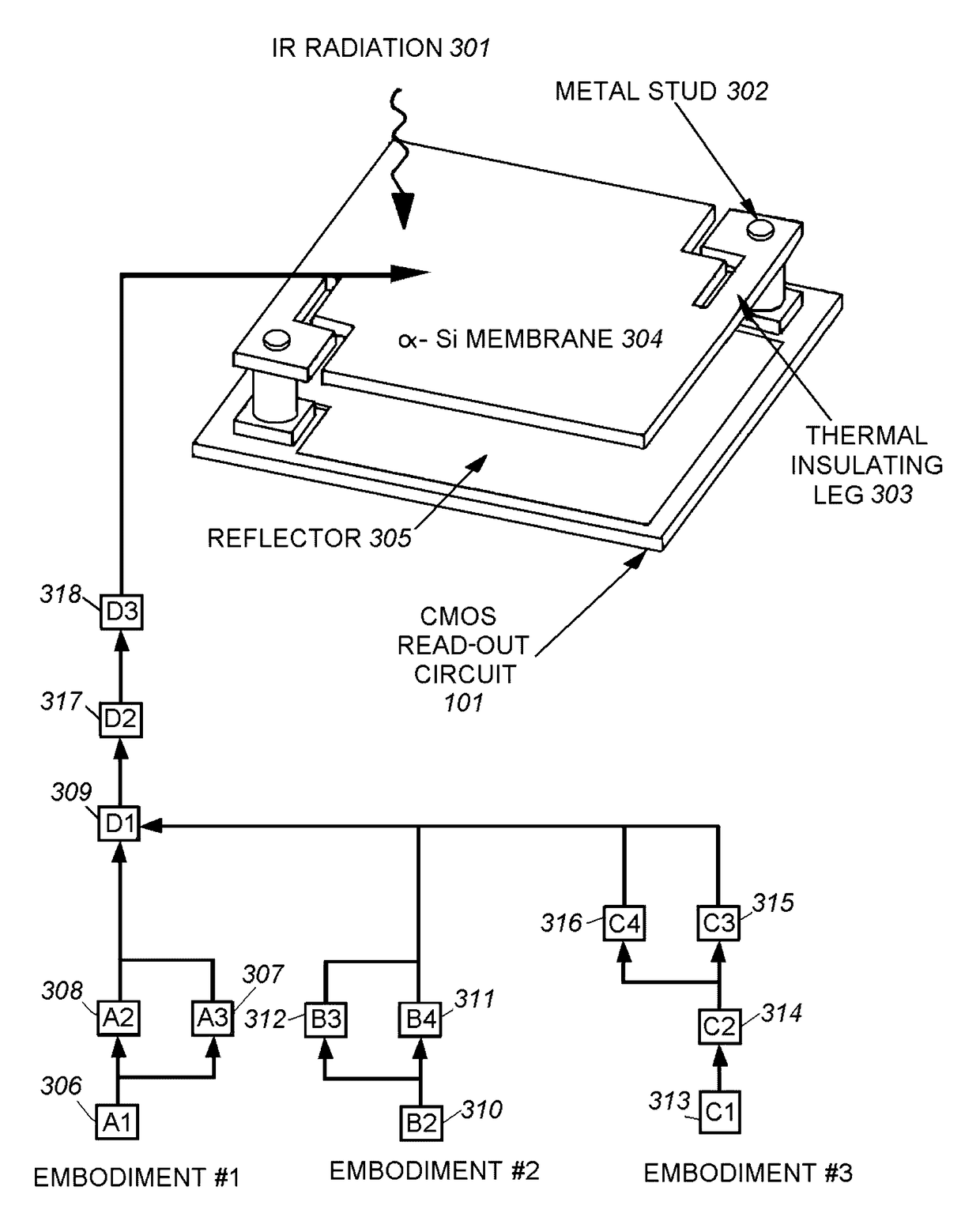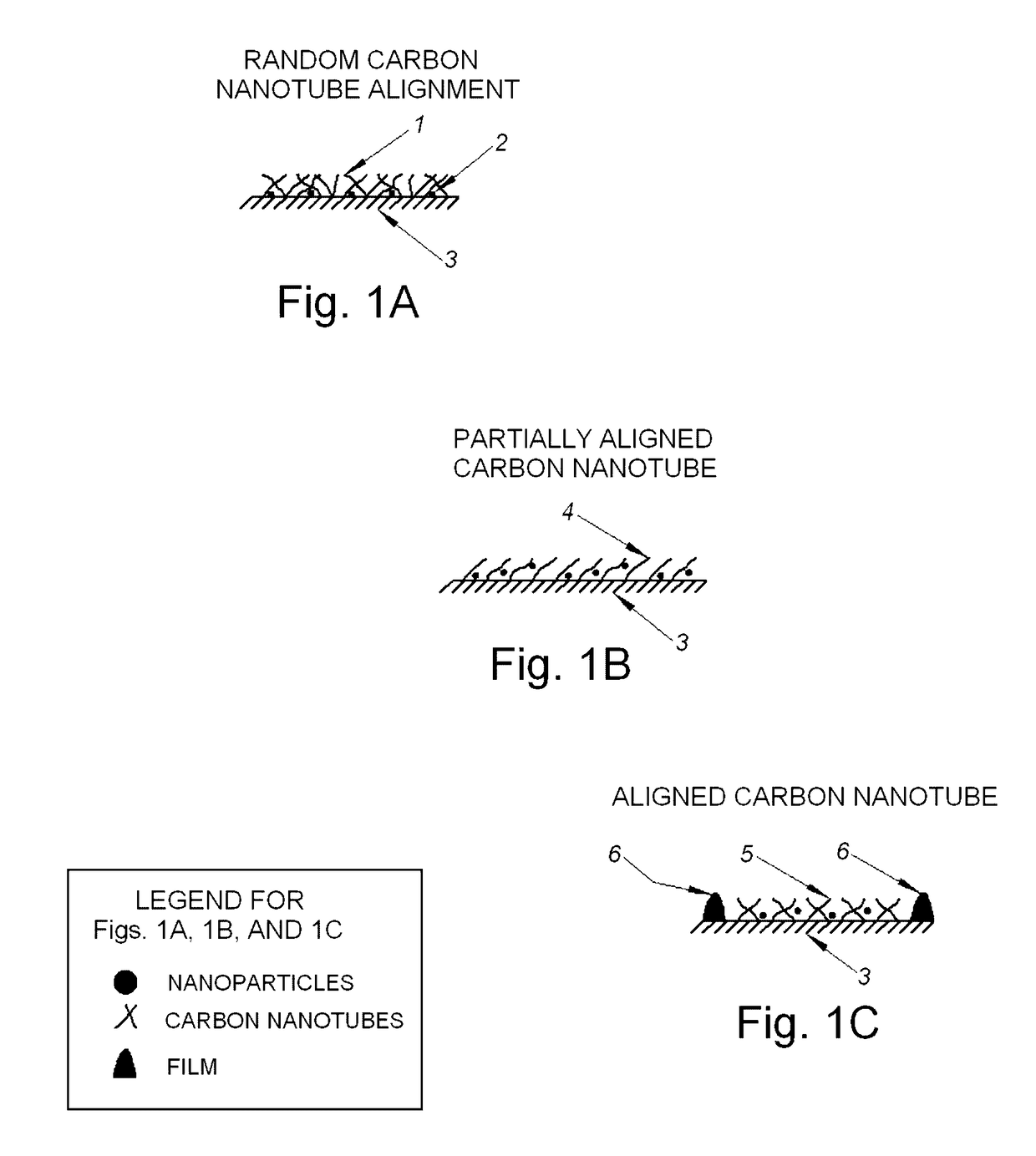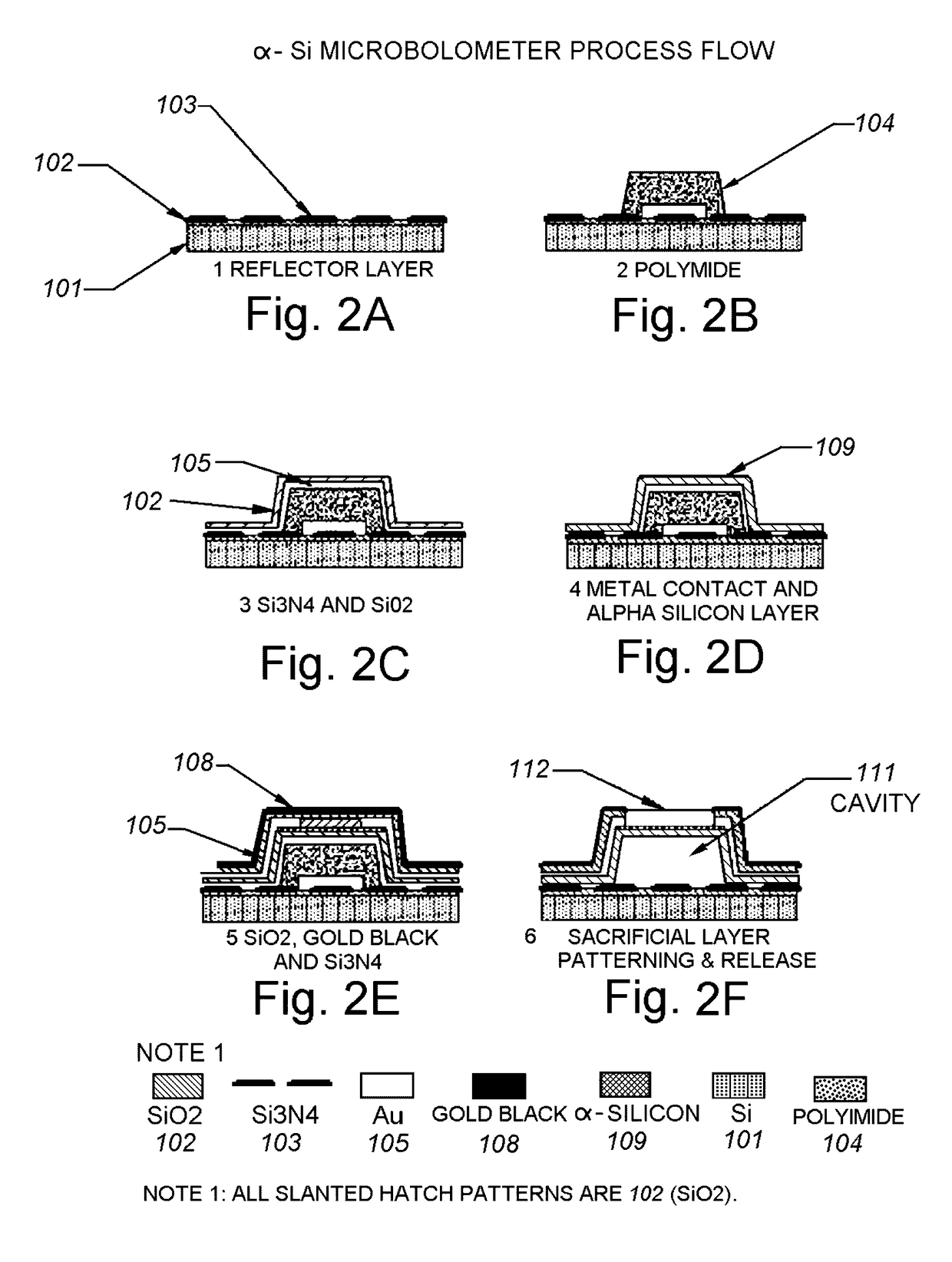Infrared radiation detectors using carbon nanotubes-silicon vanadium oxide and or amorphous silicon nanoparticles-CNT nanocomposites and methods of constructing the same
- Summary
- Abstract
- Description
- Claims
- Application Information
AI Technical Summary
Benefits of technology
Problems solved by technology
Method used
Image
Examples
Embodiment Construction
[0076]The present disclosure relates to microbolometer structures having top layers of amorphous silicon or vanadium oxide. In some examples, combinations of carbon nanotubes, nanoparticles, and / or thin films can be deposited atop the existing top layer of amorphous silicon or top layer of vanadium oxide of a microbolometer structure. Such configurations can increase the sensitivity of the microbolometers to less than 4 mK, less than 2 mK, and in some examples less than 1 mK.
[0077]FIG. 1A depicts a top layer of a microbolometer detector structure according to one or more aspects of the disclosure. As shown in FIG. 1A, the top layer of the microbolometer detector can include a layer 3 and a layer of unaligned (e.g., randomly aligned) carbon nanotubes 1 deposited upon a surface of the layer 3. The layer 3 can be any type of substrate suitable for use in a microbolometer, and in this example can be amorphous silicon (also referred to as α-silicon) or vanadium oxide, e.g., VxOy.
[0078]Th...
PUM
 Login to View More
Login to View More Abstract
Description
Claims
Application Information
 Login to View More
Login to View More - R&D
- Intellectual Property
- Life Sciences
- Materials
- Tech Scout
- Unparalleled Data Quality
- Higher Quality Content
- 60% Fewer Hallucinations
Browse by: Latest US Patents, China's latest patents, Technical Efficacy Thesaurus, Application Domain, Technology Topic, Popular Technical Reports.
© 2025 PatSnap. All rights reserved.Legal|Privacy policy|Modern Slavery Act Transparency Statement|Sitemap|About US| Contact US: help@patsnap.com



